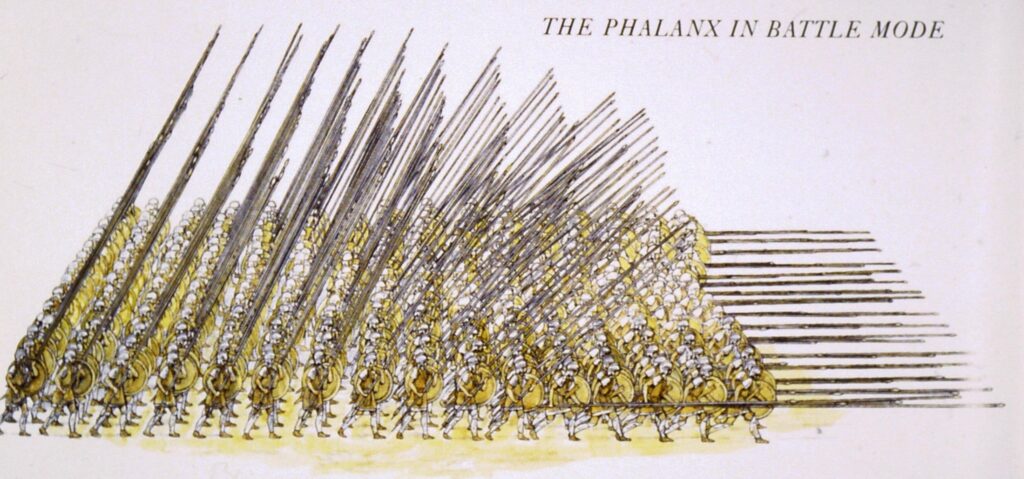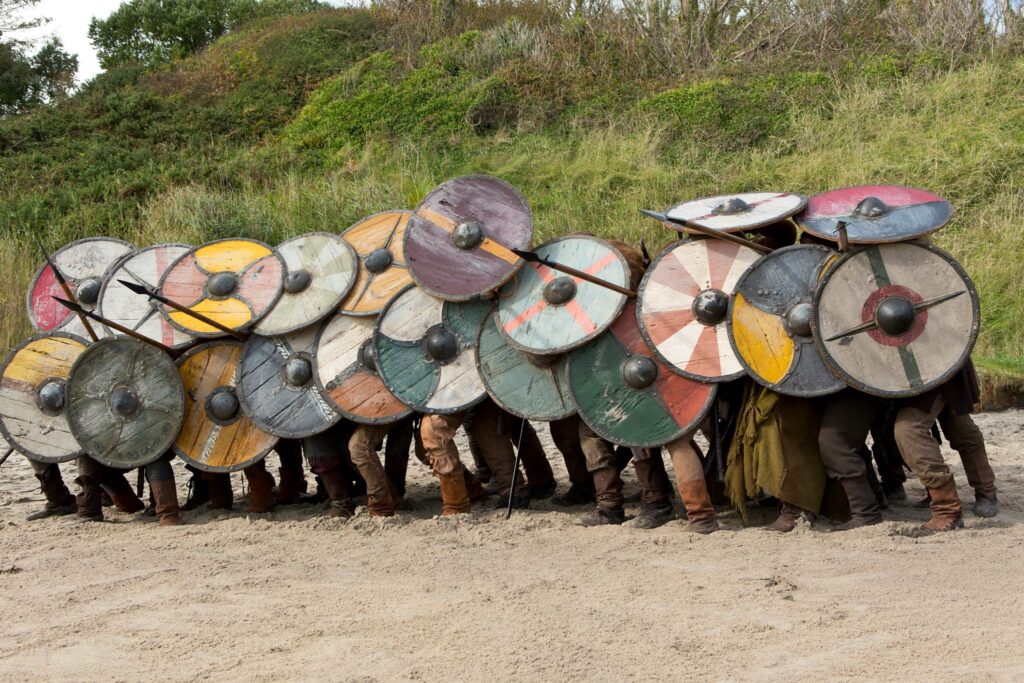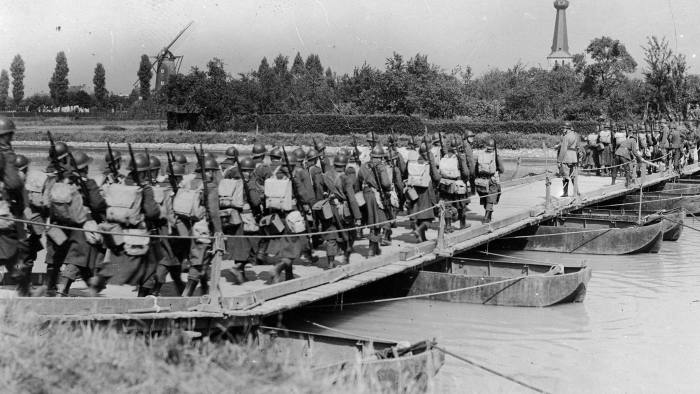
Marching in steps, cadence, military parades, and the beat of soldiers advancing in unison is a common image in modern and historical movies. Critics often point out that marching in step is only a recent military drill often used by Hollywood for dramatic effect. However, careful examination of historical records shows that marching in steps has an ancient history by itself.
The Greek Phalanx

The Greek Phalanx fought in tight line formation creating a lethal wall. In fact, to be effective and keep the wall intact during combat, Greek soldiers had to advance and retreat together in synchronized steps. The line military formation required advanced skills used only during battle. There are no records of Greek formation “marching” in step.
The Roman Legions
The first mention of actually marching in steps is found in one of the rare military treatises left by the Romans. Publius Flavius Vegetius, a late Roman Empire writer, described in Book I of the “De Re Militari” how the Roman legionnaires marched:
constant practice of marching quick and together. Nor is anything of more consequence either on the march or in the line than that they should keep their ranks with the greatest exactness. For troops who march in an irregular and disorderly manner are always in great danger of being defeated. They should march with the common military step twenty miles in five summer-hours, and with the full step, which is quicker, twenty-four miles in the same number of hours. If they exceed this pace, they no longer march but run, and no certain rate can be assigned.

The steady beat of marching foot soldiers was indeed a feature of the Roman legionnaires. These ancient soldiers marched at the sound of the Cornu (horn) and kept the pace of the “stick”. Drums were too loud and orders could go unheard; consequently, Centurions would strike their shield with a stick to give the correct marching pace. Legionnaires would also sing songs, a tradition still used nowadays by some armies during training and drills.
Throughout the centuries the discipline of marching in steps or cadence was lost and rediscovered few times. The German invaders of the Roman Empire did not march in step, nor did the Vikings who, however, did lock shields and move in unison during battle.
Marching Rediscovered

It took many centuries after the fall of the Roman Empire to again establish the concept of a long-standing army. During the Middle Ages, soldiers were poorly trained, and the time spent training was not used to learn to march in steps, but merely to use weapons and understand basic military tactics. With the advent of Gunpowder and more permanent armies, marching became more prominent again in the 17th Century. The Line Infantry tactic so common during this time required discipline to be successful in any battle. Thus, disciplined marching, holding lines, firing, and line rotations were mandatory to ensure constant fire volleys.

Marching Today
With the advent of advanced military equipment, marching in line became an obsolete military tactic. Nevertheless, Military forces of all nations still train their soldiers to march in step. Marching not only leaves everyone in awe but it’s also an incredible tool for learning discipline and order.
Breaking Stride on Bridge

Marching in steps has not always been an impressive feat. In 1831, for example, a brigade of soldiers marching across a suspension bridge in England, broke the bridge while marching in step causing dozens of soldiers to fall into the water. Since then, most armies “break stride” when passing on a bridge, knowing that the regular heavy beat can cause damage to the structure.